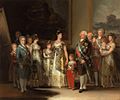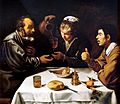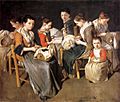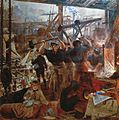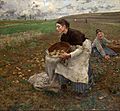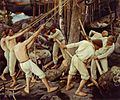Realism facts for kids
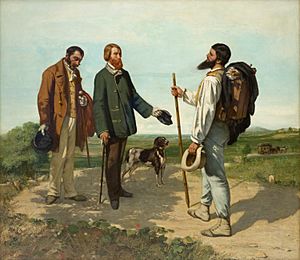
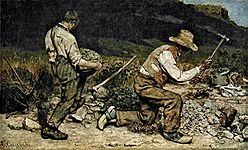
Realism is a word that can be used in many different ways. It is used mainly in the arts to describe the way that writers, musicians, painters etc. thought in the late 19th century. These artists were trying to show the world as it really is, instead of trying to escape to a world of fantasy, which is what the Romantics had been doing. The Realists wanted to give an accurate description of Nature and of the way people lived in society.
Realism in literature
Realism in literature was a movement which started in Germany. The poet and writer Heinrich Heine tried in his books to accept the world as it is instead of trying to escape from it. Realistic writers tried to find good things about society.
The interest in Realism led to a movement called Naturalism. This meant describing scenes in nature accurately. The novelist Emile Zola was a Naturalist.
Realism in philosophy
In philosophy, realism has a somewhat different meaning. Realist philosophy is a way of thinking about the world in which things have an existence even if no one is studying them (looking, hearing, smelling, touching them). This was different from older philosophers who said that things only exist because of people who are aware of them. For example: beauty only exists because someone sees something that they think is beautiful. A realist philosopher might say that beauty is there whether anyone sees it or not.
Music
In music there was a movement called Verismo which was the Italian word for “reality”. Verismo was popular in Italian opera around the end of the 19th century and early 20th century. Puccini was an opera composer whose style is typical of Verismo.
Images for kids
-
Realist or illusionistic detail of the convex mirror in the Arnolfini Portrait by Jan van Eyck, 1434
-
Lord Leighton's Cimabue's Celebrated Madonna of 1853–55 is at the end of a long tradition of illusionism in painting, but is not Realist in the sense of Courbet's work of the same period.
-
Bas-de-page of the Baptism of Christ, "Hand G" (Jan van Eyck?), Turin-Milan Hours. An advanced illusionistic work for c. 1425, with the dove of the Holy Ghost in the sky.
-
[Diego Velázquez]], The Farmers' Lunch, c. 1620
-
Giacomo Ceruti, Women Working on Pillow Lace, 1720s
-
Jean-Baptiste-Siméon Chardin, Woman Cleaning Turnips, c. 1738, Alte Pinakothek.
-
Jean-Baptiste Greuze, The Laundress, 1761
-
Albert Edelfelt, The Luxembourg Gardens. 1887
-
Gustave Courbet, Stone-Breakers, 1849
-
Jean-François Millet, The Gleaners, 1857
-
Honoré Daumier, Les Joueurs d'échecs (The chess players), 1863
-
Jean-Baptiste-Camille Corot, Young Girl Reading, 1868
-
Jules Bastien-Lepage, October, 1878, National Gallery of Victoria
-
Ilya Repin, Religious Procession in Kursk Province, 1880–1883
-
William Bliss Baker, American Naturalist painter, Fallen Monarchs, 1886
-
Pekka Halonen, Finnish Naturalist, Pioneers in Karelia, 1900
See also
 In Spanish: Realismo para niños
In Spanish: Realismo para niños





